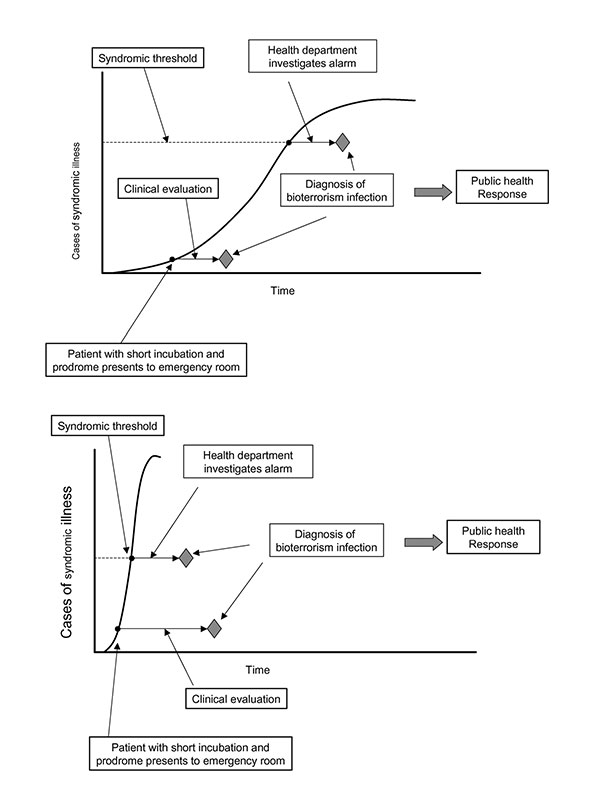Volume 9, Number 10—October 2003
Perspective
Syndromic Surveillance and Bioterrorism-related Epidemics
Figure 1

Figure 1. Number of cases of syndromic illness by time in a hypothetical bioterrorism attack and two pathways to establishing a diagnosis: syndromic surveillance coupled with public health investigation (upper pathway) and clinical and diagnostic evaluation of patients with short-incubation period disease (lower pathway). A, scenario favoring earlier detection by means of clinical evaluation. B, scenario favoring earlier detection by means of syndromic surveillance.
1For interval calculations, if reported event dates were discrepant in different case reports, dates reported by Jernigan et al. (13) were used.
Page created: January 10, 2011
Page updated: January 10, 2011
Page reviewed: January 10, 2011
The conclusions, findings, and opinions expressed by authors contributing to this journal do not necessarily reflect the official position of the U.S. Department of Health and Human Services, the Public Health Service, the Centers for Disease Control and Prevention, or the authors' affiliated institutions. Use of trade names is for identification only and does not imply endorsement by any of the groups named above.